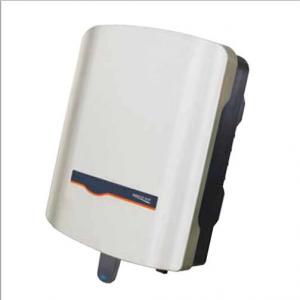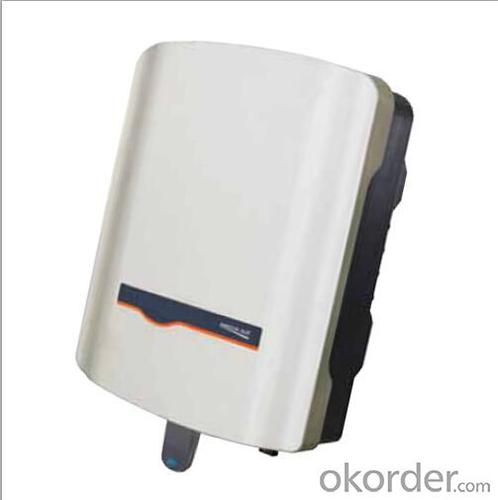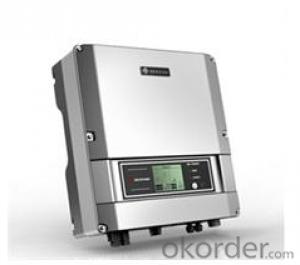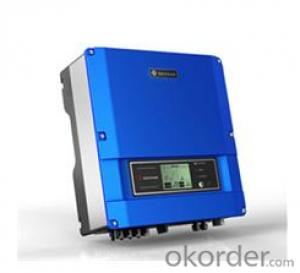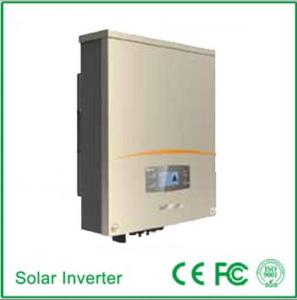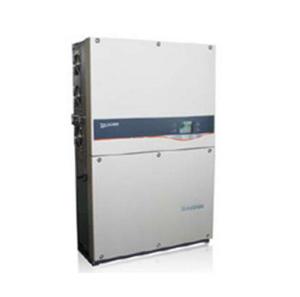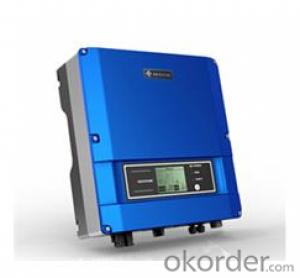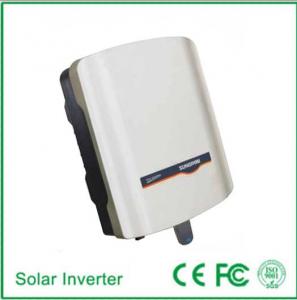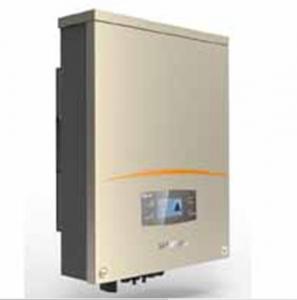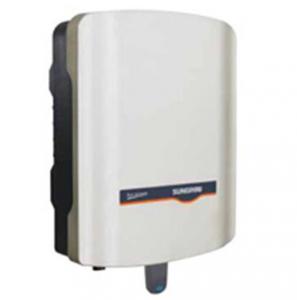Infinity Solar Inverter SG3K6TL-S
- Loading Port:
- China Main Port
- Payment Terms:
- TT or LC
- Min Order Qty:
- 500000 unit
- Supply Capability:
- 3000000 unit/month
OKorder Service Pledge
OKorder Financial Service
You Might Also Like
1. Structure of Solar Photovoltaic Grid-Connected Inverter SG3K6TL-S Description
A solar inverter, or PV inverter, or Solar converter, converts the variable direct current (DC) output of a photovoltaic (PV) solar panel into
autility frequency alternating current (AC) that can be fed into a commercial electrical grid or used by a local, off-grid electrical network.
It is acritical BOS–component in a photovoltaic system, allowing the use of ordinary AC-powered equipment. Solar inverters have
special functions adapted for use with photovoltaic arrays, including maximum power point tracking and anti-islanding protection.
Suitable for 50Hz/60Hz grid, could be used in Asia, Africa and Europe. Available for hand installation, no need for lifting machinery
assistance.
2. Main Features of the Solar Photovoltaic Grid-Connected Inverter SG3K6TL-S
• Max. input voltage 600V, compatible with different PV panel and string design
• Only 9kg, easy for handling and installation
• Max. Efficiency at 98.0%
• Ultra-quiet, suitable for residential use
• Access to home WiFi system, easy to enjoy the online monitoring
• Wireless communication design, intelligent mobile phone local and remote monitoring
• Product certification: TÜV, CE, AS4777, AS/NZS 3100, VDE AR N 4105
• Manufacturer certification: ISO 9001, ISO 14001, OHSAS 18000
3. Solar Photovoltaic Grid-Connected Inverter SG3K6TL-S Images
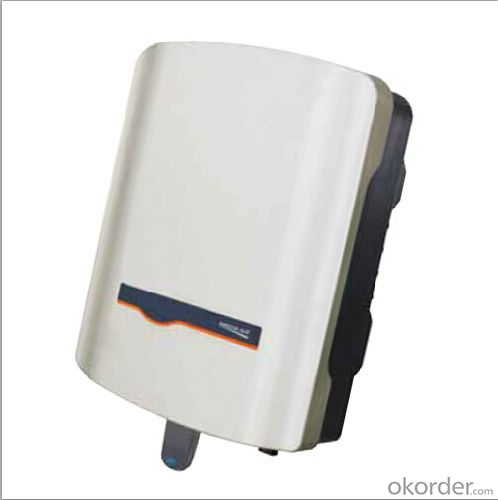
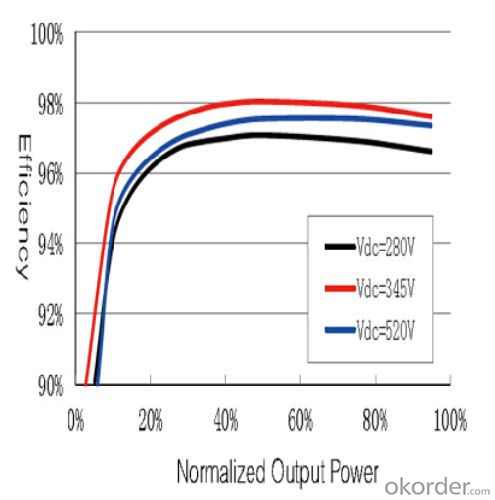
4. Solar Photovoltaic Grid-Connected Inverter SG3K6TL-S Specification
Input Side Data |
|
Max. PV input power | 3900W |
Max. PV input voltage | 600V |
Startup voltage | 150V |
Nominal input voltage | 345V |
MPP voltage range | 125~560V |
MPP voltage range for nominal power | 220~520V |
No. of MPPTs | 1 |
Max. number of PV strings per MPPT | 2 |
Max. PV input current | 18A |
Max. current for input connector | 20A |
Output Side Data |
|
Nominal AC output power | 3680W |
Max AC output power(PF=1) | 3680W |
Max. AC output apparent power | 3680VA |
Max. AC output current | 16.0A |
Nominal AC voltage | 230Vac (Single phase) |
AC voltage range | 180~276Vac (May vary as per corresponding country’s grid standard) |
Nominal grid frequency | 50Hz/60Hz |
Grid frequency range | 45~55Hz/55~65Hz (May vary as per corresponding country’s grid standard) |
THD | < 3 % (Nominal power) |
DC current injection | <0.5 %In |
Power factor | >0.99@default value at nominal power, (adj. 0.8 overexited~0.8 underexcited) |
Protection |
|
Anti-islanding protection | YES |
LVRT | NO |
DC reverse connection protection | YES |
AC short circuit protection | YES |
Leakage current protection | YES |
DC switch | Optional |
DC fuse | NO |
Overvoltage protection | Varistors |
System Data |
|
Max. efficiency | 98.00% |
Max. European efficiency | 97.50% |
Isolation method | Transformerless |
Ingress protection rating | IP65 |
Night power consumption | <1W |
Operating ambient temperature range | -25~60℃ (>45℃ derating) |
Allowable relative humidity range | 0~100% |
Cooling method | Natural cooling |
Max. operating altitude | 4000m (>2000m derating) |
Display | LED, LCD(optional) |
Communication | WiFi (optional) |
DC connection type | MC4 |
AC connection type | Plug and play connector |
Certification | IEC61000-6-2,IEC61000-6-3, |
AS/NZS3100,AS4777.2,AS4777.3 | |
VDE-AR-N-4105, VDE0126-1-1,CE,G83/2, C10/11,EN50438,CGC | |
Mechanical Data |
|
Dimensions (W×H×D) | 300*370*125 mm |
Mounting method | Wall bracket |
Weight | 9kg |
5. FAQ of Solar Photovoltaic Grid-Connected Inverter SG3K6TL-S
Q1. What is the difference between inverter and solar inverter?
A1. Inverter only has AC inpput, but solar inverter both connect to AC input and solar panel, it saves more power.
Q2. What is the difference between MPPT&PWM?
A2. MPPT has higher efficiency, it can track the max power point and won't waste energy.
- Q: What are the common maintenance requirements for a solar inverter?
- The common maintenance requirements for a solar inverter include regular inspections to ensure proper functioning, cleaning of the unit and its components to remove dust and debris, checking and tightening of electrical connections, monitoring for any signs of damage or wear, and updating firmware or software as needed. Additionally, keeping the inverter's surrounding area clean and free from obstructions is also important for optimal performance.
- Q: What is the role of a solar inverter in voltage and frequency regulation during islanding conditions?
- The role of a solar inverter in voltage and frequency regulation during islanding conditions is to ensure stability and balance in the electrical system. It actively monitors and adjusts the voltage and frequency levels to match the required standards, even when disconnected from the main power grid. This prevents overvoltage or undervoltage situations and keeps the frequency within acceptable limits, thereby maintaining a reliable and safe power supply in islanded conditions.
- Q: What is the maximum AC current output of a solar inverter?
- The maximum AC current output of a solar inverter depends on its power rating or capacity. Typically, solar inverters have a maximum AC current output ranging from 5 to 50 amps, although larger commercial or utility-scale inverters can have much higher current outputs.
- Q: Can a solar inverter be connected to a battery backup system?
- Yes, a solar inverter can be connected to a battery backup system. In fact, this connection is essential for storing excess solar energy generated during the day and using it during times when the sun is not shining, such as at night or during power outages. The battery backup system allows for uninterrupted power supply and greater energy independence.
- Q: What is the standby power consumption of a solar inverter?
- The standby power consumption of a solar inverter refers to the amount of power it consumes when it is not actively converting solar energy into usable electricity. This power consumption is typically very low, often ranging from a few watts to a few tens of watts, depending on the model and efficiency of the inverter.
- Q: What is the role of a voltage regulation feature in a solar inverter?
- The role of a voltage regulation feature in a solar inverter is to ensure that the output voltage remains stable and within a specified range, regardless of fluctuations in the input voltage from the solar panels. This feature helps to protect the connected appliances and devices from damage due to overvoltage or undervoltage, and also optimizes the efficiency and performance of the solar inverter system.
- Q: Can a solar inverter be installed indoors or outdoors?
- A solar inverter can be installed both indoors and outdoors. However, it is generally recommended to install it indoors to protect it from harsh weather conditions and extend its lifespan.
- Q: How does a solar inverter communicate with monitoring systems?
- A solar inverter communicates with monitoring systems using various communication protocols such as Wi-Fi, Ethernet, cellular networks, or powerline communication. These protocols allow the inverter to transmit data such as energy production, system health, and performance metrics to the monitoring systems. This communication enables real-time monitoring, fault detection, and remote management of the solar system.
- Q: Can a solar inverter be used with a wireless communication system?
- Yes, a solar inverter can be used with a wireless communication system. Solar inverters convert the direct current (DC) generated by solar panels into alternating current (AC) that can be used to power electrical devices. Wireless communication systems typically operate on AC power, so a solar inverter can be employed to convert the DC power generated by solar panels into AC power for the wireless communication system. This allows for the use of renewable energy to power the wireless communication system, reducing reliance on traditional energy sources.
- Q: Can a solar inverter be used in a commercial or industrial setting?
- Yes, a solar inverter can be used in a commercial or industrial setting. In fact, they are commonly used in these settings to convert the direct current (DC) electricity generated by solar panels into alternating current (AC) electricity that can be used to power various commercial and industrial equipment. Solar inverters are essential components of solar power systems in such settings and play a crucial role in maximizing energy efficiency and reducing reliance on conventional power sources.
Send your message to us
Infinity Solar Inverter SG3K6TL-S
- Loading Port:
- China Main Port
- Payment Terms:
- TT or LC
- Min Order Qty:
- 500000 unit
- Supply Capability:
- 3000000 unit/month
OKorder Service Pledge
OKorder Financial Service
Similar products
Hot products
Hot Searches
Related keywords
